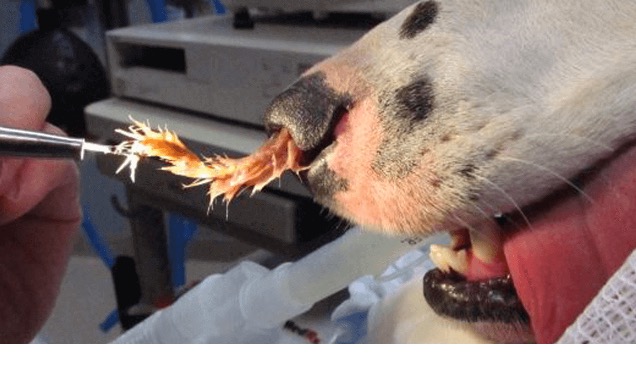Comments
PET SAFETY - In June 2019, CityWatch published an article about the danger of foxtail plants to dogs and cats.
Since that time, I have had people thank me for warning them of the danger. Unfortunately, I have also had people tell me that they saw the article too late, and that their dogs did get embedded foxtails.
This year looks to be a very bad year for foxtails, likely because of all the rain. The picture above was taken by my son Josh a few days ago in West L.A. I received an email a few days ago from an individual whose dog was severely injured by foxtails; he had not seen the CityWatch article prior to his dog’s injury and asked me to reiterate the danger foxtails pose, so the same thing doesn’t happen to others.
Please see the earlier article, which contains close-up photos of foxtails, links to additional photos, and descriptions of how dogs and cats can get foxtails and the consequences of doing so, including possible death.
The tip of a foxtail penetrates the skin of an animal or enters through an orifice. Once embedded, the shape of the barb prevents the foxtail from working its way back out; it can only move forward and it won’t dissolve on its own. It can move through your pet’s body, causing infections, abscesses, and other problems wherever it goes.

The picture above was taken by my son Josh a few days ago in West L.A.
Please be careful with your dogs and cats. Foxtails are found in fields, on trails, next to roads, in parks, on the parkways between the sidewalk and street, and even in front and back yards. Foxtails are particularly insidious in the parkways between the sidewalk and street, because a dog can easily brush up against them even when you are walking on the sidewalk. Any foxtails you find in your own yard should be immediately removed.
Once a foxtail has been embedded into your dog’s or cat’s skin, it should be removed by a vet, and often requires anesthesia and a surgical procedure. Dogs can get foxtails up their noses because they are constantly sniffing plants and the ground. Removing a foxtail from a dog’s nose may require major surgery. If the foxtail is not immediately removed from the nose by a vet, it can migrate to the lungs, requiring surgery to remove it from the lung.
Please forward this information to anyone you know who has a dog or cat; let’s keep our best friends safe!
(Jeffrey Mausner (www.mausnerlaw.com/ ) is on the Executive Committee of the Valley Alliance of Neighborhood Councils (VANC) where he serves as the Liaison to the Los Angeles Animal Services Department; he is 2nd Vice President of the Tarzana Neighborhood Council and Chair of its Animal Welfare Committee; and is a Volunteer at the West Valley Animal Shelter. He was previously a Neighborhood Council Budget Advocate and is now a Budget Representative. He is a retired attorney and law school professor and was formerly a Federal Prosecutor for the U.S. Justice Department, where he received numerous awards from the Attorney General of the U.S. Jeff is a Featured Writer for CityWatch. This article is written in his private individual capacity, not on behalf of the Animal Services Department.)
















